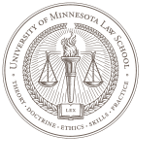Mengmeng Du, MJLST Staffer
Many Americans bid farewell to the somewhat rough 2020 but found the beginning of 2021 rather shocking. After President Trump’s followers stormed the Capitol Building on January 6, 2021, major U.S. social media, including Twitter, Facebook, Instagram, and Snapchat, moved fast to block the nation’s president on their platforms. While everybody was still in shock, a second wave hit. Apple’s iOS App stores, Google’s Android Play stores, Amazon Web Services, and other service providers decided to remove Parler, an app used by Trump supporters in the riot and mostly favored by conservatives. Finding himself virtually homeless, President Trump relocated to TikTok, a Chinese owned short-video sharing app relentlessly sought to ban ever since July 2020. Ironically but not unexpected, TikTok banned President Trump before he could even ban TikTok.
Dating back to June 2020, the fight between TikTok and President Trump germinated when the app’s Chinese parent company ByteDance was accused of discreetly accessing the clipboard content on their users’ iOS devices. Although the company argued that the accused technical feature was set up as an “anti-spam” measure and would be immediately stopped, the Trump administration signed Executive Order 13942 on August 6, 2020, citing national security concerns to ban the app in five stages. TikTok responded swiftly , the District Court for the District of Columbia issued a preliminary injunction on September 27, 2020. At the same while, knowing that the root of problem lies in its “Chinese nationality,” ByteDance desperately sought acquisition by U.S. corporations to make TikTok US-owned to dodge the ruthless banishment, even willing to give up billions of dollars and, worse, its future in the U.S. market. The sale soon drew qualified bidders including Microsoft, Oracle, and Walmart, but has not advanced far since September due to the pressure coming from both Washington and Beijing.
TikTok, in the same Executive Order was another Chinese app called WeChat. If banning TikTok means that American teens will lose their favorite virtual platform for life-sharing amid the pandemic, blocking WeChat means much more. It heavily burdens one particular minority group––hundreds and thousands of Chinese Americans and Chinese citizens in America who use WeChat. This group fear losing connection with families and becoming disengaged from the social networks they have built once the vital social platform disappears. For more insight, this is a blog post that talks about the impact of the WeChat ban on Chinese Students studying in the United States.
In response to the WeChat ban, several Chinese American lawyers led the creation of U.S. WeChat Users Alliance. Supported by thousands of U.S. WeChat users, the Alliance is a non-profit organization independent of Tencent, the owner of WeChat, and was formed on August 8, 2020 to advocate for all that are affected by the ban. Subsequently, the Alliance brought suit in the United States District Court for the Northern District of California against the Trump administration and received its first victory in court on September 20, 2020 as Judge Laurel Beeler issued a preliminary injunction against Trump’s executive order.
Law is powerful. Article Two of the United States Constitution vested the broad executive power in the president of this country to discretionally determine how to enforce the law via issuance of executive orders. Therefore, President Trump was able to hunt a cause that seemed satisfying to him and banned TikTok and WeChat for their Chinese “nationality.” Likewise, the First Amendment of the Constitution and section 230 of the Communication Decency Act empowers private Internet forum providers to screen and block offensive material. Thus, TikTok, following its peers, finds its legal justification to ban President Trump and Apple can keep Parler out of reach from Trump supporters. But power can corrupt. It is true that TikTok and WeChat are owned by Chinese companies, but an app, a technology, does not take on nationality from its ownership. What happened on January 6, 2021 in the Capitol Building was a shame but does not justify removal of Parler. Admittedly, regulations and even censorship on private virtual platforms are necessary for national security and other public interest purposes. But the solution shouldn’t be simply making platforms unavailable.
As a Chinese student studying in the United States, I personally felt the of the WeChat ban. I feel fortunate that the judicial check the U.S. legal system puts on the executive power saved WeChat this time, but I do fear for the of internet forum regulation.

